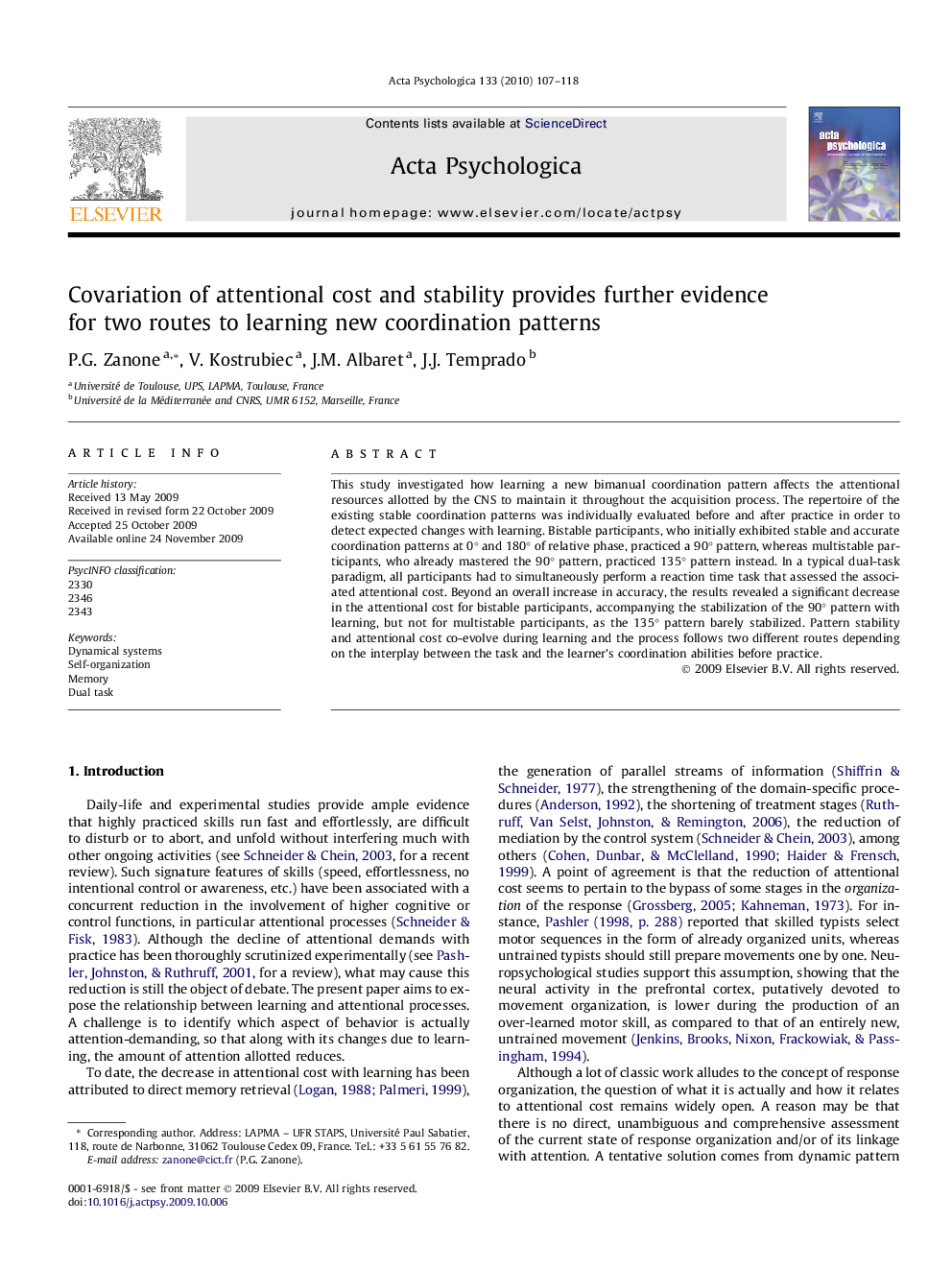| Article ID | Journal | Published Year | Pages | File Type |
|---|---|---|---|---|
| 920116 | Acta Psychologica | 2010 | 12 Pages |
This study investigated how learning a new bimanual coordination pattern affects the attentional resources allotted by the CNS to maintain it throughout the acquisition process. The repertoire of the existing stable coordination patterns was individually evaluated before and after practice in order to detect expected changes with learning. Bistable participants, who initially exhibited stable and accurate coordination patterns at 0° and 180° of relative phase, practiced a 90° pattern, whereas multistable participants, who already mastered the 90° pattern, practiced 135° pattern instead. In a typical dual-task paradigm, all participants had to simultaneously perform a reaction time task that assessed the associated attentional cost. Beyond an overall increase in accuracy, the results revealed a significant decrease in the attentional cost for bistable participants, accompanying the stabilization of the 90° pattern with learning, but not for multistable participants, as the 135° pattern barely stabilized. Pattern stability and attentional cost co-evolve during learning and the process follows two different routes depending on the interplay between the task and the learner’s coordination abilities before practice.
